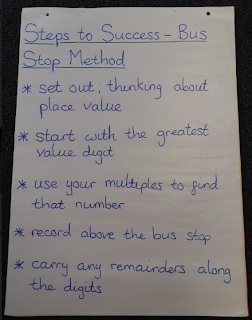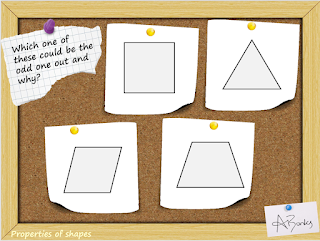Helen Gathercole writes: At the risk of alienating my audience in my first outing as a Staff Classroom blogger, I’d like to start with a humblebrag. The fact that I am writing this piece began when I overheard a conversation in which I was the subject - I won’t name names, you know who you are - that went something like this: Person 1 “Helen’s good with metacognition, perhaps she could do something on it.” Person 2 “Yes, that would be good.” Realising that I was imminently going to be asked to do something publicly, and recognising the inherent potential for embarrassment in that, I decided that I had better do some rapid reflection and research. I’ll put my hands up, metacognition is not a word that I used every day (until about 2 months ago) and I needed to make sure that my understanding of what metacognitive strategies looked like matched what this person had seen and liked in my practice.
The Education Endowment Foundation defines metacognition as “the way in which pupils monitor and purposefully direct their thinking and learning” and their Teaching and Learning Toolkit rates metacognition and self-regulation as one of the most impactful strategies for accelerating progress; second only to feedback. Helpfully, the EEF goes on to list 4 recommendations that classroom teachers can adopt in order to develop the metacognitive strategies of their students. Sadly, they decided not to augment these recommendations with examples of what these strategies might look like in practice.
Metacognition is something education professionals usually do very well; ironically, we probably do it intuitively and automatically most of the time. As highly educated people our ability to plan, monitor and evaluate - metacognitive strategies - our learning are so embedded we probably don’t even realise how our thinking has led us to a decision or an action; at least until we are taken out of our comfort zone (for example, when someone asks us to write a blog for whole staff consumption) and have to be very explicit with ourselves about how we are going to be successful. Now imagine that pretty much every lesson every day feels like you are way outside your comfort zone. Many of our SEND students have the strategy of ‘needs a checklist’ recorded on their MINT profile; they need a list of what is going to happen in the lesson just to enable them to be able to stay in the lesson without panicking, acting out and ending up removed. Student’s whose minds are already in a state of near panic over the learning they already know they will find hard cannot recognise, absorb and develop metacognitive strategies unless we teach them in a very explicit and very scaffolded way; unless we make them feel safe to ‘think aloud’.
I’d like to try to show how I’ve interpreted the 4 EEF recommendations with the SEND students in the Nurture classroom. Hopefully some of this will be strategies you recognise from your own practice, be something you would be happy to try or be something you feel would support all SEND students. And, as we all know, what benefits SEND students benefits all students. Being able to plan, monitor and evaluate - to think about thinking - are skills for life.
The first EEF recommendation is to “explicitly teach pupils metacognitive strategies, including how to plan, monitor and evaluate their learning”. In the Nurture classroom, I interpreted this as something I call ‘steps to success’.
This strategy is very good for process tasks, eg an operation in Math's. I create the steps with them, refer to the steps during modelling and constantly prompt them to refer to the steps to guide my modelling or complete the task themselves. The steps are a good at scaffolding their responses when I ask “what do we do next?” and they can be used to self prompt when stuck. The process becomes embedded as steps are gradually removed until they are no longer needed.
The second EEF recommendation is “model your own thinking to help pupils develop their metacognitive … skills”. I try to do this in the Nurture classroom by using something I refer to as ‘thinking steps’.
The third EEF recommendation is “promote and develop metacognitive talk in the classroom.” Or, as I think of it, ‘sound like an annoying toddler’: How did you…? Why did you…? What if…? Why isn’t…? How about…? It’s about creating a climate in the classroom where students feel safe to think, decide on an idea and share it. In the Nurture classroom the students were very passive and silent because they were worried about having a go and failing. I often used odd one out games that weren’t curriculum related just to get them talking before moving onto odd one outs relating to the curriculum. Make sure there is more than one possible answer and it becomes low stakes; students soon learn that, so long as their reason makes sense, there are several acceptable answers. Plus, having a variety of possible answers, really allows us to see what knowledge they have absorbed on a topic.
The final EEF recommendation is “explicitly teach pupils how to organise and effectively manage their learning independently”. I felt that this was all about teaching students to choose the right organisation tool; many of which are things we recommend to aid revision, eg mind maps, planning frames, graphic organisers.
These can be great tools with the capacity to be differentiated for SEND students by having headings or other information prefilled. As mind maps lend themselves to organising large amounts of knowledge over a broad subject, eg the Tudors, and graphic organisers (like the one above) are more suited to showing understanding of a specific topic, e.g. maths concepts, it’s about being really explicit about why they are being asked to use a specific organisation tool. If we are really explicit about why, students will begin to make appropriate independent choices.
I suppose the recurring theme here is the need to be really explicit; to show SEND students, through modelling, how we think. We need to understand that when we model we are not just showing students how to do something; we are showing them how we thought about how to do something.
No comments:
Post a Comment